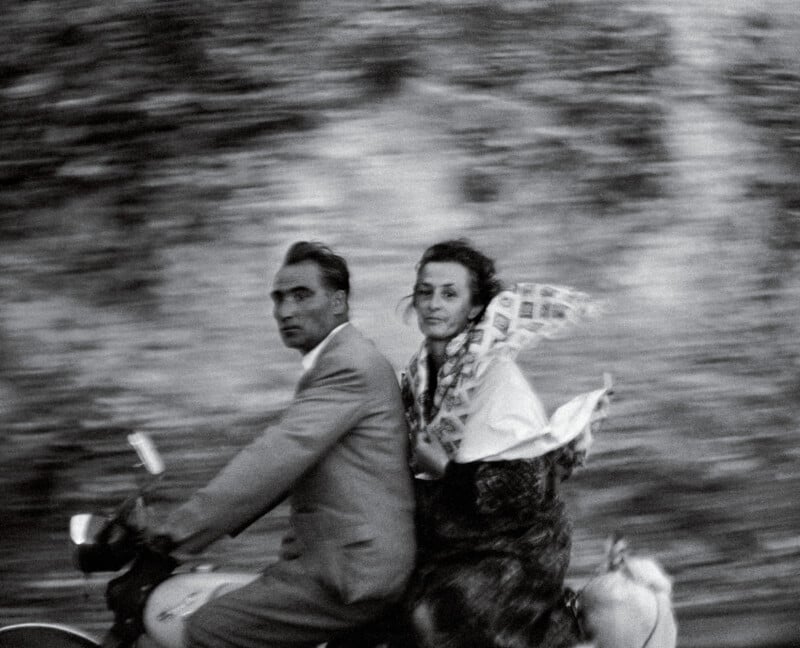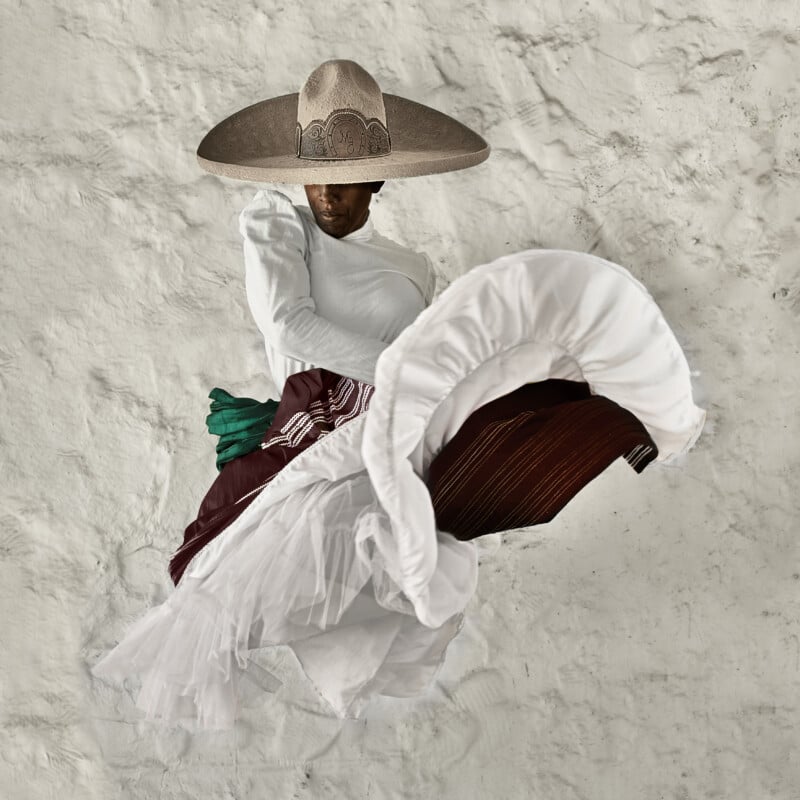Dimensions of Reality: Alternative Views at PHotoESPAÑA 2025

In an era when AI and digital manipulation seem to be facing off with the veracity of traditional photography, it’s worth noting that image making has always been an interpretive art. Several historic exhibitions at PHotoESPAÑA 2025 in Madrid remind us that photographic depictions of the real world stem from the eye of the beholder.
Now in its 28th year, Madrid’s summer-long photo festival once again hosts a smorgasbord of noteworthy photography from around the globe. PHE25 features more than 100 exhibitions in and around Spain’s capital. Below are a few highlights on view this summer.
Joel Meyerowitz: Europa 1966-67

In 1966, at age 28, lifelong New Yorker Joel Meyerowitz quit his job as an art director so he could pursue his passion as a photographer. Around that time he landed a Guggenheim fellowship to do the same.
Meyerowitz and his then-wife Vivian embarked on a year traveling in Europe. They set sail on the SS France from New York to Calais, then (by car) trekked through England, Ireland, France, Spain, Morocco, Italy, Greece, Turkey … and points in between. Along the way Meyerowitz developed his eye for street photography, shooting thousands of rolls — he started with the “art photography” mode of black-and-white but gradually incorporated color; “I felt like a rebel!” he said. In 1968, the Museum of Modern Art exhibited a series of Meyerowitz’s images called “My European Trip: Photographs from the Car,” which put the young lensman on the map.
This exhibition — coinciding with Meyerowitz receiving the 2025 PHE Prize — expands on that show, tracing the photographer’s vast continental journey. In the coastal town of Malaga, Spain, he befriended a family deeply versed in flamenco music and culture — with a joyful spirit at odds with the Franco dictatorship in power — and settled in for half a year of deep exploration. The resulting images reflect a transformative time for both the continent and the artist.
The exhibition runs through July 13 at Madrid’s Fermán Gómez Centro Cultural de la Villa.
Ayana V. Jackson: Nosce Te Ipsum (Know Thyself)

Photographer and New Jersey native Ayana V. Jackson has been exploring themes of identity, gender, race and historical paradigms for more than two decades. Her current work — “Nosce Te Ipsum,” latin for “know thyself” — features a vibrant series of large-scale self-portraits in which the artist envelopes herself in familiar archetypes from Afro-Mexican traditions.
Subtitled “Membrum Fantasma” (Spanish for “phantom limb”), the images depict Black characters in scenes from the Mexican Revolution, incorporate wildly elaborate headdresses and garb, and revisit colonial “caste paintings” to challenge racial and social stereotypes. While visually stunning, the work evokes a message from the artist: “We must acknowledge the past to act in the present and build a better future.” (The exhibition runs through August 31 at Museo Nacional de Antropologia in Madrid.)
Duane Michals: The Photographer of the Invisible
![]()
This exhibition highlights Duane Michals’ use of black-and-white photography to create detailed narratives exploring spiritual themes. The “invisible” elements of the title are staged manipulations of imagery by the artist: We see a series of bedside pictures showing an elderly patient morph into a departing spirit (“Grandpa goes to heaven”); a woman’s twisting reflections in a round oval (“Dr. Heisenberg’s magic mirror of uncertainty”); a bathroom setting transformed into scale-bending mise-en-scènes (“Things are queer”); a sky full of stars zooming down into the eye of the beholder (“Chaos”).
Michals’ portraits — from Andy Warhol behind his slender hands (above) to a self-portrait where Michals uses his thumbs as devil horns — are equally enigmatic. The images reveal an artist determined to bridge realities in the visible world with the secret realm of human imagination.
The exhibition runs through August 24 st Madrid’s Fundación Canal.
Nicholas Nixon: The Brown Sisters 1975–2022
![]()
While Nicholas Nixon’s photography has ranged from cityscapes to social documentary work, the Boston-based artist is best known for this long-running annual series of family portraits. It started with a large-format photograph of Nixon’s wife, Bebe Brown, and her three sisters made in 1975. Then in their teens and early-20s, the young siblings were randomly placed in order: Heather, Mimi, Bebe, and Laurie. This placement remained when they returned for a portrait the next year … and then the next … capturing a record each year until 2022, when by mutual agreement the series ended.
The show’s full set of 48 dated portraits reveals a striking study of the ties that bind and the vagaries of aging. The lensman’s large-format setup calls for steady gazes (sans smiles). As the sisters readjust their body language, settling into new settings and outfits and hairdos, adding crinkles and laugh-lines to their faces, they appear more stoic and steely as the years roll on. Their individual burdens seem tempered by togetherness, their mounting years leavened by the joy of family.
The exhibition runs through August 24 at Fundación MAPFRE in Madrid.
Source link




